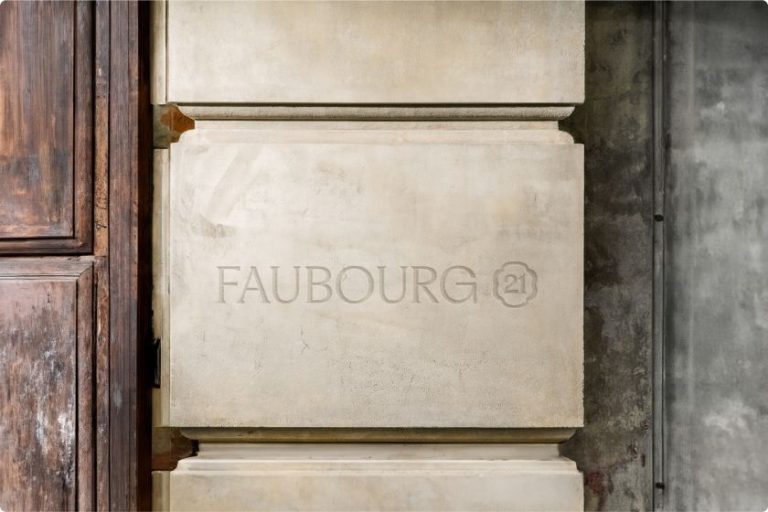Image licensed via Adobe Stock
We explore the pivotal role of the brand audit in the modern design process and get expert input on best practices.
When you take on a new client as a designer or agency, it’s standard practice to carry out a brand audit. Despite the name, this has nothing to do with accounting. It’s perhaps best thought of as a brand ‘health check’, helping you and the client understand where the brand currently stands, how it is perceived, and where it can improve.
Brand audits can be long and involved, and younger designers might find them a little frustrating when they’re desperate to jump in and fix those tracking problems with the logo or change that horrible font on the website. However, skipping this vital stage in the design process would be a big mistake.
Ultimately, you’re not redesigning a brand to impress other designers: you’re here to serve the client. It’s only by carrying out a thorough and comprehensive brand audit that you can really understand why the brand needs a redesign and what strategic goals it needs to achieve. Otherwise, you’re essentially just doing some nice (but pointless) colouring in.
In this article, we’ll explore how brand audits are typically carried out and offer expert tips on how to do so effectively, as shared by members of the Creative Boom community. (You can also read the full discussion here).
Key elements
First, for the uninitiated, what does a brand audit cover? That will vary from company to company, but typically, they’ll include at least some of the following:
Brand identity: What is the brand’s mission, vision, values, and personality? Are these elements clear, consistent, and aligned with the brand’s overall strategy?
Brand image: How does its target audience perceive the brand? What are common customer perceptions, attitudes, and beliefs about the brand?
Brand performance: How is the brand performing in terms of sales, market share, customer loyalty, and other key performance indicators? What are the areas for improvement?
Competitive analysis: How does the brand compare to its competitors in terms of their brand identity, image and performance?
Marketing and communication: How effective are the brand’s advertising, PR, social media, and content marketing? Are they aligned with the brand’s overall strategy? Are they effectively reaching the target audience?
What it looks like in practice
So, what might a brand audit actually look like in practice? Everyone approaches it slightly differently, but Erin Pitts, founder and creative partner at The Label Collective, tells a fairly typical story. “We approach brand audits by meeting decision makers and stakeholders over a series of individual interviews,” he explains. “At those times, we get to know their company, talk about their ideal customer personas, and try to understand the way they run their part of the business. We also strive to learn how each person perceives the brand—visually or otherwise—and what they feel makes them different from the competition.
Pete Hawkins, creative director at Chase Design Group, takes a similar approach. “Part one is collating and understanding, the ‘where we are’ bit,” he explains. “We often use the word ‘immersion’ as part of this phase because while we may be experts in branding, we may not be experts in… frozen chicken. We need time to get into our clients’ world, to do them justice, and not to make assumptions. To do that, we look deeply into the brand, the category/competition and the consumers.
“Part two is drawing conclusions. An audit without some sort of point of view is just a collection of resources that the clients themselves can capture. This is different to a further strategy phase. This round-up of an audit is about understanding the gaps; the later strategy and design phases are about filling those gaps.”
Asking the right questions
The word ‘audit’ may conjure up visions of methodically pouring over spreadsheets. But actually, a brand audit is anything but mechanical. (Indeed, many prefer the term ‘brand discovery’ for this very reason). The process arguably has more in common with journalism than accountancy because you’re essentially aiming to dive deep into the culture and practices of the organisation and draw conclusions that even the client may not have thought about.
As Bernadette Engel, strategy lead at Dalziel & Pow, puts it: “Asking the right questions is essential. Whether through one-on-one interviews or multi-stakeholder workshops, thoughtful questioning—from straightforward to abstract—fosters an environment where individuals feel comfortable sharing candid, unfiltered perspectives. This is the magic I seek to craft targeted recommendations for the next phase.”
Pete adds that you should cast your net as wide as possible. “Don’t just take the founder’s word for who or where the brand is,” he stresses. “What do their staff think? In past projects, I’ve had conversations with both the founder and the forklift driver in the same room. Listen to consumers early; a brand is less about what it says it is and more about what your audience tells you it is. Also, consider analogous brands. Is there a brand in a totally different category that may have faced similar challenges? These can not only be helpful to draw inspiration from, but they can also be invaluable when discussing approaches that everyone can visualise and understand.”
In short, a brand audit that tells your clients what they already know is probably a waste of time. “To be truly useful, a brand audit needs to be an injection of truth serum for an organisation,” says Tom Munckton, executive creative director, Fold7Design. “Especially with a new client relationship, it’s important not to tiptoe around it and be clear about your intention to be the outsider looking in with fresh eyes. You’re free of any subjectivity and distortion, carrying an inquisitive ‘novice mindset’ to loosen up elements that may have gotten stuck for the business over time.”
Another trap to avoid, he adds, is being too narrow in scope. “You need to take a holistic view across all of a brand’s touchpoints—visual and verbal—leaving no stone unturned. Audits can also be iterative in isolation – so to be really meaningful; they should also be accompanied by a true apples-with-apples comparison against other brands in the space.”
Avoiding false narratives
That said, competitor analysis has to be handled carefully, and it’s important to avoid getting sucked into false narratives.
For example, the BBC and ITV spent the early part of this century obsessed with beating each other’s Saturday night ratings. At the same time, YouTube quietly became the world’s most popular TV channel. Consequently, in 2023, the number of 16- to 24-year-olds in the UK who watch live TV had fallen to 48%, compared with 76% just five years before. In this context, it’s questionable how much Strictly beating X Factor in 2018 ever really mattered.
The point is that what clients perceive as their rivals are not always the most important people to worry about. Hannah Mearns, VP strategy at VaynerMedia EMEA adds that: “We also believe that brands focus way too much on each other, and could spend more of their energy focusing on their customers and being clear on their own offering. So while we do look at competitors’ marketing, we pay much more attention to where consumers’ heads are at and what they are saying about the brand we are auditing.”
Building agreement
Of course, ultimately, you are working for your client, so it’s not about “who’s right” and “who’s wrong” here; it’s about building a relationship and improving understanding. That’s how Ben Mottershead, founder and creative director, Never Dull Group sees it, anyway. “As part of this, we tend to run a day workshop with key stakeholders,” he explains. “The purpose being to ensure the decision makers within the business are aligned, and agree on key principles and directions.”
Shouldn’t that already be the case? “You will be amazed how many times the CEO might think differently to the CMO, or a marketing manager is unaware of the company’s vision and business direction,” Ben responds. “This creates huge inefficiency at best and in-fighting at worst, so getting the team aligned and under the same trajectory is a big factor in ensuring any additional work we carry out is met with optimism rather than hostility. It’s almost like we’re holding commercial therapy sessions, where problems can be discovered, diagnosed, reframed, re-aligned and then solved.”
Designer Nicholas Robb tells a similar story. “I think very often brands have migrated organically over the years, and as is natural, a lot of stuff has happened without them necessarily thinking about WHY,” he explains. “So a lot of brands turn into Frankensteins, which is where an audit can help start acting intentionally with the brand. I used to do a really in-depth written report, but more recently, I’ve found the client finds it far more helpful to simply jump on a call, and we go through their brand strategy, audience, and long-term goals together and I offer feedback on where they’re at, versus where they want to be.”
Once more with feeling
Alexander Andlaw, co-founder and creative director of FORM Brands Studio, sums this all up. “I love a good audit!” he enthuses. “It’s the perfect opportunity to get under the skin of a brand and truly understand the challenge ahead. Done well, it lays the foundation for everything that follows. But no two audits are the same. Clients often face different constraints, whether it’s budget, access to key stakeholders, or even being in a different country.”
And we’ll end with this thought from Paiman Azizi, senior PR manager at MMBSY Amsterdam. “Brand audits should be less about what a brand is and more about why it matters,” he stresses. “Too often, audits obsess over mechanics—competitor benchmarks, touchpoints, social metrics—without dissecting the deeper emotional undercurrents that shape brand perception.
“Brand audits should be approached through a cultural and psychological lens. Ask: What does this brand make people feel? Where is the friction between what they claim and how they’re actually perceived? Legacy alone won’t save a brand: just ask Gucci right now. Nor will short-term marketing wins. Audits should be diagnostic but also prescriptive—less about what exists today and more about what needs to be built for tomorrow.”










